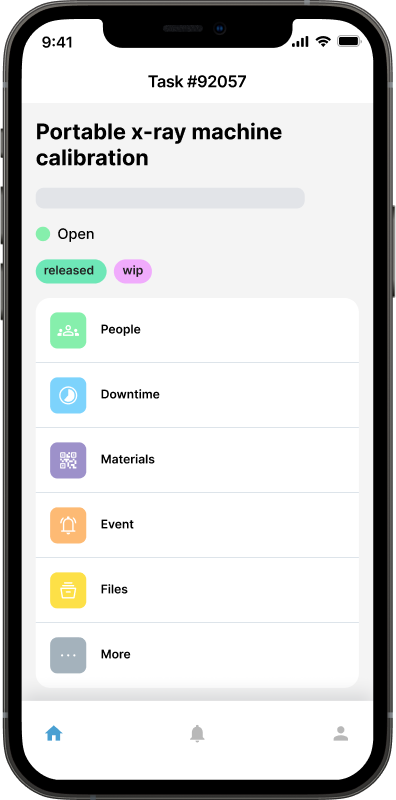Enhancing Work Order Management with a Web-Based CMMS Platform
In our rapidly digitalizing world, one tool stands out as a paragon of efficiency and control, revolutionizing how businesses handle work order management: the web-based Computerized Maintenance Management System (CMMS). A CMMS not only digitizes and streamlines work order processes but also catalyzes operational efficiency and business growth. If you are interested in how technology can overhaul traditional work order management and usher in a new era of productivity, keep reading. This tool may be the game-changer you've been looking for.
The Evolution of Work Order Management: A Deep Dive into the Role of Web-Based CMMS Platforms
As we move into an increasingly digital era, the web-based CMMS platform is evolving from an option to a strategic necessity. Work order management, in general, has seen a transformative shift over the years—the transition from manual procedures to the dynamic digital capabilities of web-based CMMS platforms.
The Pre-Digital Era of Work Order Management
In the past, work order management was essentially a process dictated by paperwork. Employees would have to log work orders, often on paper forms manually, then physically deliver these forms to the relevant department. This laborious method of handling work orders was time-consuming and prone to errors and loss of important data due to misplaced or mishandled documents.
Delays in implementing manual work orders were frequent due to the time required to process them. Manual methods were also susceptible to miscommunications and misunderstandings, as important details were easily overlooked or misinterpreted. Such systems lacked efficiency, often leading to significant downtime, increased costs, and lower customer satisfaction.
The Advent of Web-Based CMMS Platforms
With the digital revolution came the development of CMMS platforms, which fundamentally reshaped how companies manage work orders. With their centralized databases and digitized processes, Web-based CMMS platforms offered a solution to the shortcomings of manual work order management. It enabled businesses to leverage technology to manage, track, and analyze their work orders in real-time. Its cloud-based nature ensured access from anywhere, at any time, improving agility and control over work orders.
The advent of web-based CMMS platforms has completely revolutionized the landscape of work order management. These platforms haven't just improved existing systems—they've redefined what's possible, replacing obsolete, manual methods with dynamic, real-time solutions. This transformation isn't merely a step forward—it's a leap into an era of unprecedented efficiency and control, providing a powerful tool to help businesses navigate and thrive in the digital age. Understanding this evolution is crucial in appreciating the full potential of CMMS technology as we continue to explore its benefits in subsequent sections.
The Power of a Web-Based CMMS Platform: Key Features
As we've seen, the shift to CMMS is not a mere change in format but an overhaul of the entire work order management process. What follows is a list of key features that contribute to this transformation.
Efficiency and Productivity
The cornerstone of a CMMS's appeal lies in its ability to transform work order management. A CMMS drastically improves efficiency and productivity by automating routine tasks and providing universal access.
Data Accuracy and Transparency - A Single Source of Truth
The transformation goes beyond productivity. A CMMS ensures data integrity, providing a comprehensive, reliable data source for all work orders. This facet of a CMMS forms the basis for informed decision-making.
Predictive and Preventive Maintenance
Adding to the allure of a CMMS is its ability to enable a proactive approach to maintenance. Using data analytics to identify potential issues, a CMMS paved the way for timely preventive maintenance and reduced downtime.
Resource Optimization
The final key feature we'll discuss is resource optimization. A CMMS gives a bird's eye view of resource utilization, informing decision-making and enhancing productivity.
The transformative power of a web-based CMMS platform is truly remarkable. It catalyzes efficiency and productivity by automating routine tasks and providing universal access and revolutionizes data management, offering an accurate and transparent single source of truth. This advanced platform goes even further by enabling predictive and preventive maintenance, minimizing downtime, and optimizing resource utilization to maximize productivity. Collectively, these features represent the cornerstone of CMMS platforms, underlining their crucial role in modern work order management. As we continue our journey in the subsequent sections, we'll see how these compelling features play out in the practical implementation of a CMMS platform.
Mastering the Implementation of a Web-Based CMMS Platform
The deployment of a web-based Computerized Maintenance Management System (CMMS) is a substantial strategic move that calls for meticulous planning and execution. The four critical steps include assessing needs, selecting the right platform, training the team, and continuously reviewing and updating the system.
Assess Your Needs: The Foundation of Effective Implementation
Understanding Current Work Order Management
The first stage of implementing a CMMS platform involves an in-depth analysis of your current work order management processes. This evaluation includes understanding the tasks involved, identifying strengths and weaknesses, and pinpointing areas for improvement.
Determining Key Requirements for a CMMS Platform
Once the thorough mapping of the current landscape is complete, the next step is to define the key requirements for a CMMS platform. These requirements will vary based on factors such as the company's size, the nature of the work orders, the existing technology infrastructure, and the anticipated growth trajectory.
Choosing Your Digital Ally: Selecting a Suitable CMMS Platform
Alignment with Needs
The selection of a web-based CMMS should align with the requirements identified in the assessment phase. The right platform will meet your current needs and be flexible enough to accommodate future changes and expansions.
Key Selection Criteria
In addition to alignment with needs, other factors influencing the selection include the platform's usability, scalability, and integration capabilities. Usability ensures the platform can be used efficiently by all team members, scalability allows for growth and expansion, and integration capabilities enable the CMMS to connect seamlessly with other systems in the organization.
Train Your Team: Ensuring Smooth Transition and Adoption
The transition to a new system can be challenging, and your team must be well-prepared to use the CMMS platform effectively. This preparation involves comprehensive training that covers all aspects of the system.
Ensure the training program includes practical exercises and real-world scenarios that simulate actual work situations. Providing ongoing support to address any issues or concerns during the transition is also important.
Regularly Review and Update Your System: A Continuous Improvement Approach
Continuous Monitoring
After the CMMS is live, monitoring its performance is essential. This monitoring should evaluate the system's technical performance and how well it is helping the company meet its work order management objectives.
Regular Updates and Upgrades
The digital world is dynamic, and your CMMS platform must evolve with changing needs and technologies. Regular updates and upgrades ensure the system remains robust, reliable, and relevant, capable of delivering the expected benefits.
Implementing a web-based CMMS platform is a strategic move that can greatly enhance work order management. It requires careful planning, selection, training, and ongoing review and updating, but the rewards –efficiency, accuracy, and productivity – make it well worth the effort.
The Future of Work Order Management with CMMS: An Era of Efficiency
Looking toward the future of work order management, the role of web-based CMMS platforms becomes undeniably critical. These platforms are no longer optional; they are indispensable tools for any organization seeking to optimize operations, enhance service delivery, and remain competitive in an increasingly digital world.
With a CMMS, businesses can streamline their work order processes, enhance data integrity, implement predictive maintenance strategies, and optimize resource utilization - all contributing to improved operational efficiency and customer satisfaction.
Implementing a web-based CMMS is not simply about keeping pace with technological advancement; it is a strategic decision that future-proofs your organization. It sets your organization on a path of continuous improvement, innovation, and sustainable growth, making CMMS an exciting prospect for any business committed to operational excellence.

